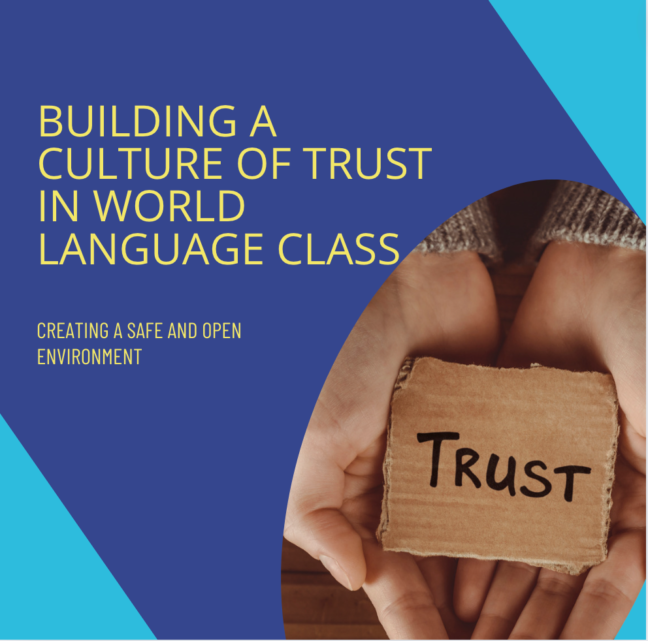by VIcky Masson
‘Why do we teach…?‘ is a column of Language Teaching Lab. It might help us think deeper on why we teach a certain topic. In addition, it might show a new perspective on how to teach it.
Emotions galore
Why is it important to build a culture of trust in our language class? The beginning of the school year is always one full of emotions for me. I love new beginnings and I know my students love them too. Each new year allows us a fresh start. It is like having a blank page in front of us to draw and write our next chapter.
Apart from this initial excitement towards a new year, my students also feel the uncertainty of the unknown. They have lots of questions regarding their new teachers, friendships, and also, let’s face it, how they are going to be assessed. Students want to succeed in school and each year brings new challenges.
Building connections
Teachers want to learn about their students. They want to know about students’ strengths and stressors. At the beginning and throughout the year teachers usually plan activities and tasks that will help them get to know their students better. ‘What do they like?’ ‘What is important to them?’ ‘How can I help students overcome obstacles?’ Building those connections takes time and it is absolutely worth it. The more we learn about students’ identities, backgrounds, and of course, how they learn best, the better. I see building these connections at the center of my teaching. But wouldn’t it be important to start concentrating on developing ‘Trust’ first?
HP Teaching Fellow Challenge-Based Learning
I am so lucky to be a Digital Promise #HPTeachingFellow! The fellowship helped me tackle last year’s new distance learning modality with strength and support.
Along with other fellows, we embarked on a Challenge-Based Learning (CBL) Nano-Challenge.
The group I belonged to had teachers and instructional coaches. We engaged in the Nano-challenge and investigated different ways of building relations with students in distance learning. After some thought and prompted by questions posed by our facilitators, we came to the conclusion that in order to build positive relationships, students needed to trust us first. Therefore, we shifted our ‘act’ question to answer “How do we build trust for student learning?”
Building a culture of trust
I realized through the Nano-Challenge that by building a culture of trust first, our students would feel safe and supported while in distance learning. Now that I am starting a new school year, I believe that building a culture of trust applies to onsite learning too.
To develop and build a culture of trust in my language class, I put together some activities into a lesson plan. The following includes one of the activities we did. I used the Harvard Project Zero Thinking Routine, “Root Cause” thus, becoming “Root Cause of Trust.” For this part of the lesson I had students work with assigned partners.

I was amazed at how much students opened up throughout the lesson but in particular during the ‘Root Cause’ task. Students were also amazed at having someone explicitly asking and talking with them about trust.
Giving students agency and showing them you care for what they have to say is key in building relationships and trust. It deepens your understanding of who they are and what they care about. Most importantly, my students understood that I really cared about them. This lesson allowed me to emphasize a classroom culture where learning would happen. And all was done virtually and in Spanish!
Begin with a culture of trust and everything else will fall into place
In times of remote learning (or face-to-face learning), it is not only critical getting to know students or building relationships between students and teachers, but primarily it is about building trust. Once trust is present, as fragile as trust might sometimes be, students will surely share more about how they feel, what they think, and how their ‘mindsets’ adapt and change to the new realities.
We are starting a new year. I should begin having my students talk about what is important to them. I should weave into my curriculum other lessons related to other deep concepts like ‘trust.’ Which concepts would you investigate in your classes?
